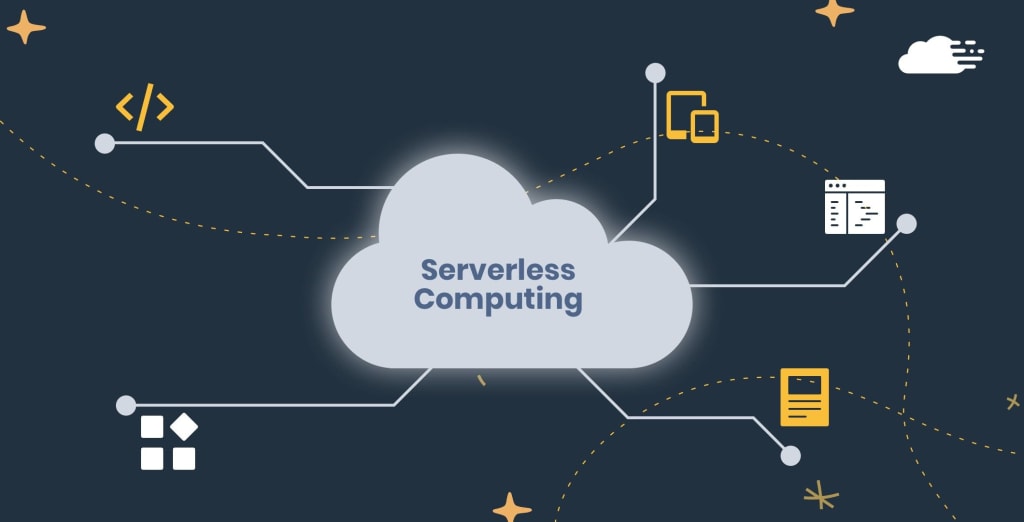Introduction to Serverless Architecture in Web Development
Serverless architecture has rapidly gained popularity in the web development community, offering a flexible and efficient way to build and deploy applications.

This approach allows developers to focus on writing code without worrying about managing servers or infrastructure. Here’s a concise introduction to serverless architecture and how it can revolutionize your web development process.
What is Serverless Architecture?
Despite the name, serverless architecture doesn’t mean there are no servers involved. Instead, it refers to a cloud computing model where the cloud provider manages the server infrastructure, dynamically allocating resources as needed. Developers simply write code in the form of functions or microservices, which are executed in response to events, such as HTTP requests or database changes.
In a serverless setup, you pay only for the compute time you consume, which can lead to significant cost savings compared to traditional server-based models.
Key Components of Serverless Architecture
1. Functions as a Service (FaaS): FaaS allows you to deploy individual functions that are executed on demand. Each function performs a specific task, such as processing an API request or handling a database event. Popular FaaS platforms include AWS Lambda, Google Cloud Functions, and Azure Functions.
2. Backend as a Service (BaaS): BaaS provides pre-built backend services, such as databases, authentication, and file storage, that you can integrate into your application. This eliminates the need to build and manage these components yourself. Examples include Firebase and AWS Amplify.
Advantages of Serverless Architecture
1. Cost Efficiency: With serverless architecture, you only pay for the resources you use, rather than maintaining idle servers. This pay-as-you-go model can lead to significant cost savings, especially for applications with variable or unpredictable traffic.
2. Scalability: Serverless platforms automatically scale your application in response to demand. Whether you have one user or a million, the cloud provider ensures that the necessary resources are available, making it easy to handle sudden spikes in traffic without manual intervention.
3. Reduced Operational Complexity: Serverless architecture offloads the responsibility of infrastructure management to the cloud provider. This means you don’t have to worry about server maintenance, capacity planning, or scaling, allowing you to focus on writing and deploying code.
4. Faster Development and Deployment: By leveraging FaaS and BaaS, developers can quickly build and deploy applications without dealing with the complexities of traditional server management. This accelerates the development cycle and allows for faster iteration and innovation.
Use Cases for Serverless Architecture
1. API Backends: Serverless architecture is ideal for building APIs that need to handle varying levels of traffic. Functions can be triggered by HTTP requests, making it easy to deploy RESTful APIs or GraphQL endpoints.
2. Real-Time Data Processing: Applications that require real-time data processing, such as IoT devices or event-driven systems, can benefit from serverless functions that respond to events and process data instantly.
3. Scheduled Tasks: Serverless functions can be scheduled to run at specific intervals, making them perfect for tasks like data backups, report generation, and system maintenance.
4. Chatbots and Messaging: Serverless architecture can support chatbots and messaging platforms by providing a scalable backend that handles user interactions and processes messages in real-time.
Challenges and Considerations
1. Cold Starts: Serverless functions may experience a delay when invoked for the first time after a period of inactivity, known as a cold start. This can impact performance for time-sensitive applications.
2. Vendor Lock-In: Using proprietary serverless services from cloud providers can lead to vendor lock-in, making it difficult to migrate to another platform without significant rework.
3. Complexity in Monitoring and Debugging: Distributed nature of serverless functions can make it challenging to monitor and debug applications. Developers need to use specialized tools and practices to gain visibility into their serverless applications.
4. Resource Limits: Serverless platforms may impose limits on execution time, memory, and other resources, which can be a constraint for resource-intensive applications.
Conclusion
Serverless architecture offers a modern approach to building and deploying web applications, providing cost efficiency, scalability, and reduced operational complexity. By understanding its components, advantages, and use cases, you can leverage serverless architecture to streamline your web development process and focus on delivering value to your users. However, it's essential to consider potential challenges and plan accordingly to make the most of this innovative approach.
Read More: https://techhorizonsolutions.blogspot.com/2024/07/introduction-to-serverless-architecture.html
About the Creator
Enjoyed the story? Support the Creator.
Subscribe for free to receive all their stories in your feed. You could also pledge your support or give them a one-off tip, letting them know you appreciate their work.





Comments
There are no comments for this story
Be the first to respond and start the conversation.